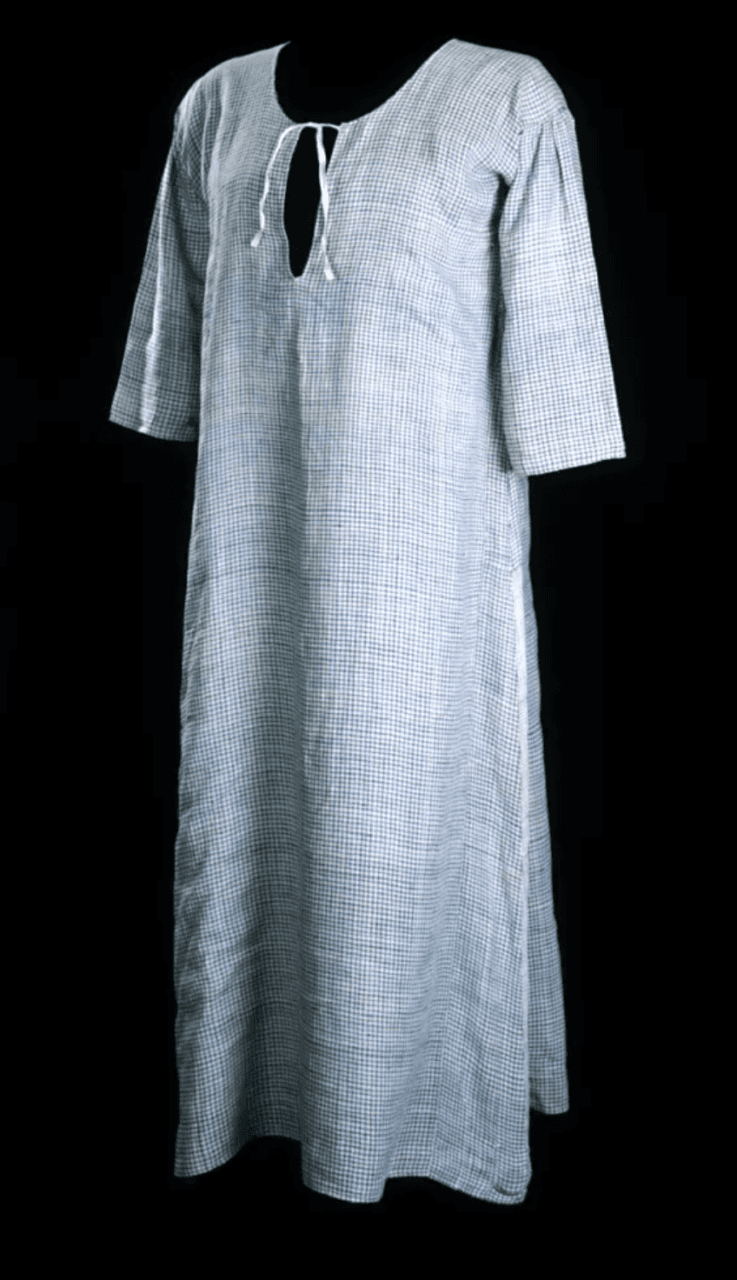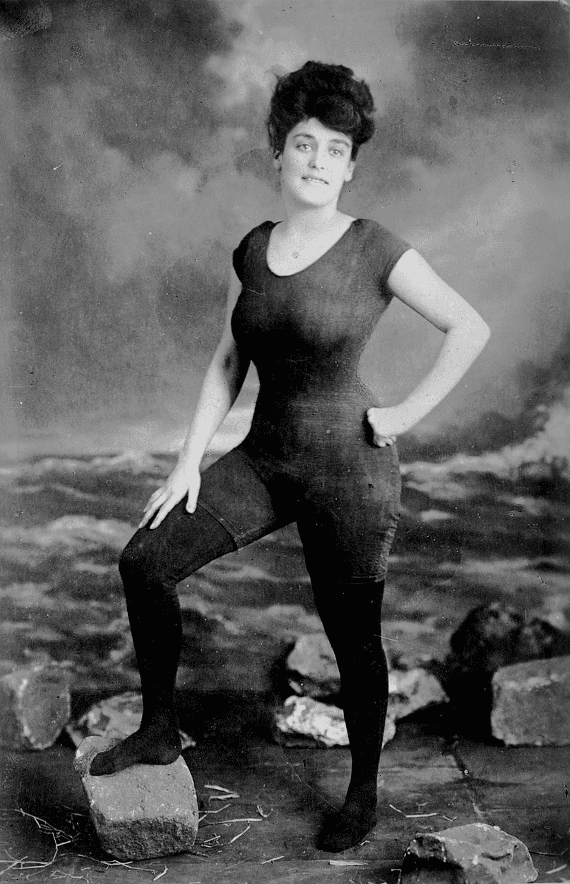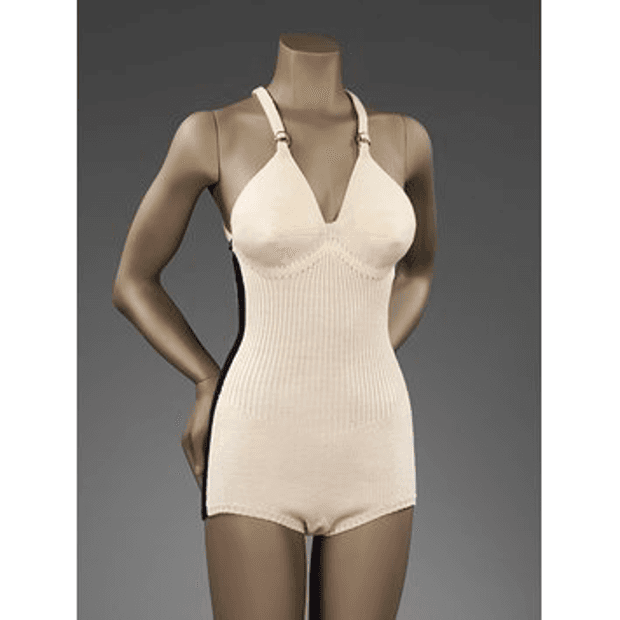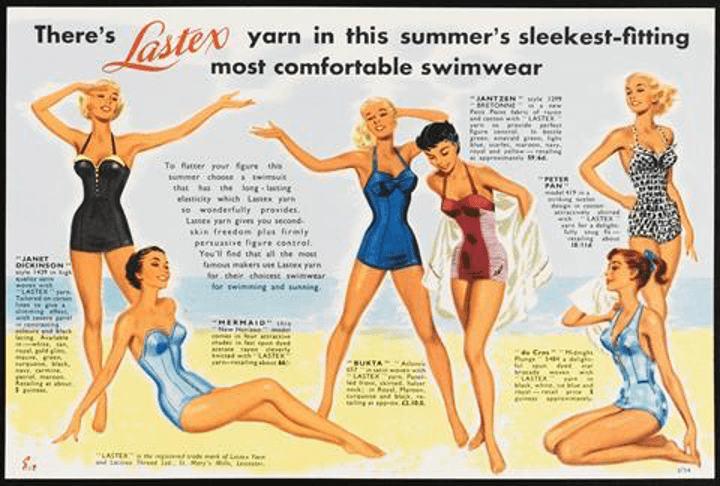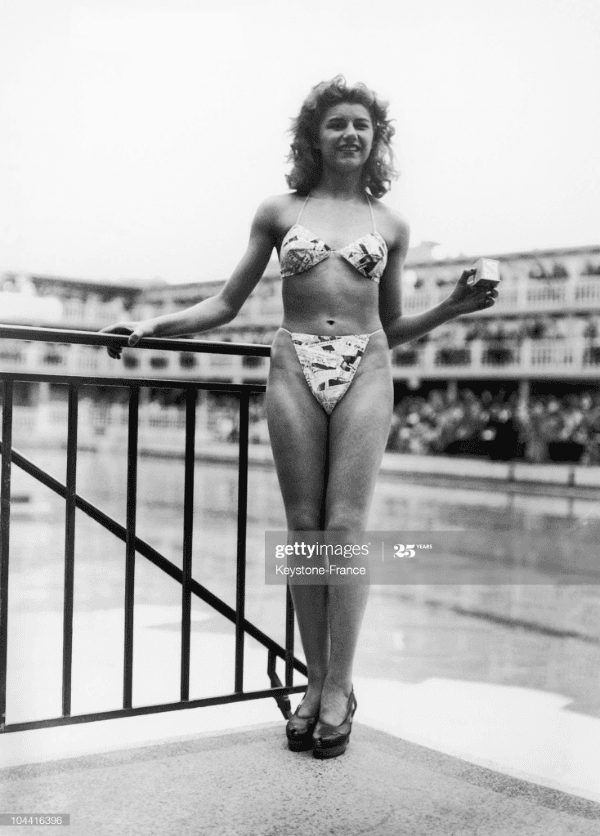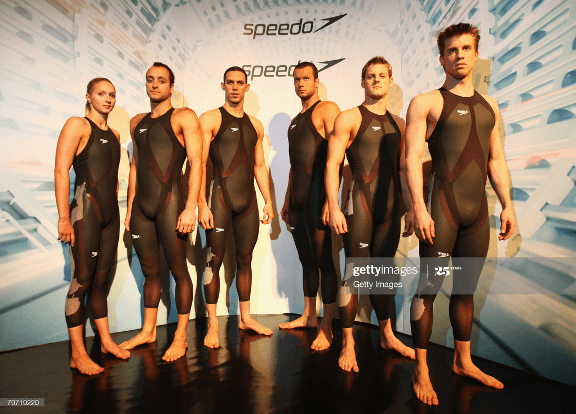Explore the World's Best Ideas
Join today and uncover 100+ curated journeys from 50+ topics. Unlock access to our mobile app with extensive features.
Women’s swimwear has undergone an unparalleled transformation
Swimwear is loosely defined as a category of garment often worn when participating in swimming or bathing activities.
Swimwear is expected to fulfil different requirements:
- Competitive swimmers need a streamlined and tight-fitting garment which reduces friction and drag in the water.
- Recreational swimwear must be fashionable while protecting the wearer's modesty and withstanding water and sunlight.
Exploring the history of female swimwear gives insight into fashion trends, and technological advancements in materials and design and explores female liberation.
8
105 reads
18th Century Swimwear
Sea bathing became popular as a recreational activity. Bathing in the sea provided health benefits for both women and men but immersing oneself completely was not seen as sufficiently feminine.
Women would wear loose, open gowns similar to the chemise which were more comfortable to wear in the water when compared to more restrictive day clothes.
The gown was made from linen with small lead weights sewn into each quarter of the dress to ensure the dress did not float up.
7
98 reads
19th Century Swimwear
During the Victorian era, women wore bathing dresses with high necks, long sleeves, and knee-length skirts.
Linen and wool fabrics were used with belts at the waist. Women would wear bloomer-like trousers under the bathing dress to maintain their modesty.
Towards the end of the Victorian era, a one-piece garment became popular, where the blouse was attached to the trousers. Women wore a mid-calf-length skirt on top to divert attention from the wearer's figure.
7
91 reads
1900-1910
Material advancements allowed for significant transformations in twentieth-century women’s swimwear. Swimming became a competitive sport, and women started to compete in the Olympics in 1912.
Australian swimmer Anette Kellerman is credited with the modernization of female swimwear. She was invited to perform in front of the British Royal Family in 1905, but her swimsuit was prohibited as it was tight-fitting and showed the lower half of her legs. So she sewed black stockings onto her swimsuit.
7
75 reads
The start of technological advancements in swimwear material
In the 1910s, Jantzen was the leading producer of bathing suits. Jantzen first produced 'woollen suits' for rowing clubs, but its popularity cause Jantzen to market it to a wider audience. In 1921, Jantzen referred to the garment as a swimsuit.
After the First World War, women’s swimwear trends began to differ across continents. American and European women wore knitted swimwear, but it tended to become misshapen when wet, jeopardising the modesty of the swimsuits.
7
66 reads
1930s Swimsuits
The 1930s gave way to the health and fitness movement, favouring fit and healthy female physiques.
- Women were encouraged to participate in exercises deemed lady-like, such as swimming.
- Women also started experimenting with tanning, which became fashionable and conveyed that one holidayed and was therefore affluent.
- In 1932, Elsa Schiaparelli patented a backless swimsuit with a built-in brassiere to avoid tan lines from swimsuit straps whilst sunbathing.
7
65 reads
The invention of Lastex yarn
Lastex yarn was invented in 1931 and became a game-changer for swimwear. Lastex would often be combined with artificial fibres such as rayon resulting in a stretchy and shiny fabric that would hold its form in and out of the water. Swimsuits could now be produced in a much larger range of colours and prints.
At the end of the 1940s, Christian Dior launched his New Look, which consisted of nipped-in waists and full skirts, which shifted the trend to feminine and hourglass figures for women.
7
56 reads
The creation of the bikini
The design of the bikini is credited to two separate designers who introduced the revolutionary garment at the same time.
- French fashion designer Jacques Heim created a minimalist two-piece swimming garment in May 1946. called the Atome.
- In July 1946, Louis Réard created what he called the bikini, which consisted of only four triangles of material that were held together with string.
7
80 reads
Experimenting with swimwear
In 1956, Speedo first introduced nylon into swimwear, and in the 1970s, Speedo added elastane into their swimwear. The combination of elastane and nylon significantly reduced water drag and improved the durability of swimwear.
During the 1960s, designers started selling ready-to-wear swimwear.
- In 1964, the designer Rudi Gernreich launched his iconic monokini.
- Towards the end of the twentieth century, bikinis and swimsuits were still the go-to swimwear, which now featured high-cut legs, strapless bandeau bikini tops, and even matching sarongs.
7
63 reads
21st Century swimwear
In 2008 Speedo launched a body-length swimsuit made from elastane-nylon and polyurethane, which gave these swimsuits an unfair advantage due to their hydrodynamic properties.
Following their use in the 2008 Beijing Olympics, the regulations for swimwear were revised. Women's swimwear could only be shoulder to knee-length.
7
80 reads
IDEAS CURATED BY
"With great power comes great responsibility". We all know who said that, but it's so true.
Lila H.'s ideas are part of this journey:
Learn more about fashion with this collection
How to make sustainable choices in everyday life
Identifying ways to reduce waste and conserve resources
Understanding the impact of human actions on the environment
Related collections
Similar ideas
4 ideas
What Did Ancient Greeks and Romans Wear?
thoughtco.com
6 ideas
What Is Fast Fashion?
goodonyou.eco
Read & Learn
20x Faster
without
deepstash
with
deepstash
with
deepstash
Personalized microlearning
—
100+ Learning Journeys
—
Access to 200,000+ ideas
—
Access to the mobile app
—
Unlimited idea saving
—
—
Unlimited history
—
—
Unlimited listening to ideas
—
—
Downloading & offline access
—
—
Supercharge your mind with one idea per day
Enter your email and spend 1 minute every day to learn something new.
I agree to receive email updates


